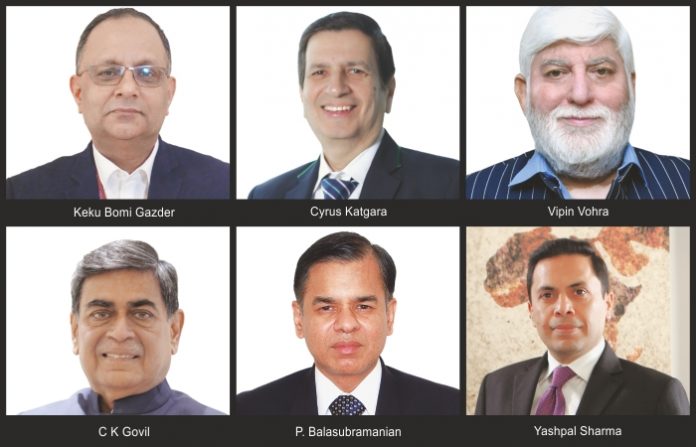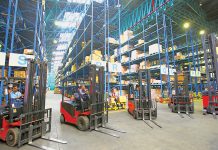India’s FTA strategy seeks reliable and robust supply chain allies that will provide investment, technology access and sustainable trade. Prioritizing air cargo in FTAs can have a positive impact on cross-border trade. It can reduce trade barriers, such as customs delays and bureaucratic procedures, among others.
Ritika Arora Bhola
With logistics and air cargo gaining due recognition after the pandemic, emphasis is being laid on prioritizing air cargo in ongoing Free Trade Agreements (FTAs) by the Union government, which are believed to facilitate EXIM trade, reduce trade barriers, and increase investments. To boost exports, the country has signed the CEPA with the UAE, and the Economic Cooperation and Trade Agreement with Australia. Along with trade agreements, other crucial developments expected to take place include boosting trade infrastructure, digitizing procedures and setting up a fast-track digital mechanism to facilitate seamless trade. FTAs with these countries are expected to become official in the Q4 of 2023. The country is also in negotiations with Canada for enhancing trade.
Strategical approach
According to Ernst and Young, India’s previous 13 FTAs failed due to a variety of reasons and led to increase in imports than exports. But now, India is adopting a fresh approach towards FTAs and engaging with those partners that have potential to increase trade and are politically and strategically aligned, stated the report.
India’s new FTA strategy seeks reliable and robust supply chain allies that will provide investment, technology access and sustainable trade. Along with lowering tariffs, priorities include building resilient supply chains, production integration, digital trade, and environmental protection, said experts. Previously, there were many challenges related to certifications and regulations, the industry and the government are gearing up to overcome the obstacles and sign FTAs with developed nations, which would not only boost India’s economic growth, but also help the country exploit its full potential and set a benchmark globally.
Bottlenecks
- In the past, the complexity of certification requirements and rules of origin under the FTAs have hindered the country’s ability to streamline processes for exporters.
- The arduous procedures and paperwork have made it difficult for the exporters to meet prescribed standards and the high cost of certificates of origin has increased compliance costs.
- The government’s lack of comprehensive efforts to popularize FTAs among industry stakeholders after their implementation has hindered the FTAs’ effective implementation.
- After the FTAs came into effect, there were limited outreach activities and inadequate marketing to create awareness about their benefits among exporters. Several exporters do not know about the incentives and advantages available to them under the FTAs, resulting frequently in underutilization of the agreements.
- The disparity in performance of the manufacturing sectors in the country and its FTA partner economies such as South Korea, Malaysia, Vietnam, and Thailand are another factor hindering the progress of the FTAs. South Korea and ASEAN’s manufacturing sectors outperformed the country in critical industries such as electronics, automobiles,
leather, and textile products, and the like. - ASEAN countries’ focus on research, innovation, the government support, and upgrading value chains has allowed ASEAN member states to produce goods at a lower cost, enhancing their global competitiveness. But Indian manufacturers face challenges that make importing from ASEAN countries and South Korea expensive than domestic production.
- More awareness to be generated.
Benefits
- Positive impact on cross-border trade.
- FTAs will enhance accessibility to a wider range of markets.
- Enable businesses to engage in international trade and reach consumers globally.
- To explore vast opportunities in sectors such as agriculture and electronics.
- Reduce trade barriers, such as customs delays and bureaucratic procedures, to further facilitate trade.
- FTAs will increase India’s exports in sectors such as pharmaceuticals, textiles, and electronics spoke to air cargo industry stalwarts for better understanding of its significance.
Air cargo offers efficiency in quicker delivery
Air cargo should indeed be considered as a priority in Free Trade Agreements (FTAs). Prioritizing air cargo in FTAs can have a positive impact on cross border trade. Firstly, air cargo offers unmatched speed and efficiency in transporting goods, reducing lead times, and allowing quicker delivery of products. This efficiency can lead to a boost in trade activities. It enhances accessibility to a wider range of markets, making it easier for businesses to engage in trade and reach out to consumers internationally.
Secondly, air cargo is crucial for perishable and high-value goods that require swift transportation for maintaining quality and value. Prioritizing air cargo can open lucrative avenues in agriculture and electronics. Provisions related to air cargo in FTAs can help reduce trade barriers, such as customs delays and bureaucratic
procedures, further facilitating trade. Therefore, prioritizing air cargo in FTAs can streamline cross-border trade, boost economic activities, and help countries harness the benefits of global commerce. Prioritizing air cargo in FTAs can offer several advantages to India’s EXIM (export-import) trade, investments, and participation in global markets. India’s exports, especially in sectors such as pharma, textiles, and electronics, can benefit from quicker and reliable transportation through air cargo. This can open new markets and increase export volumes. A robust air cargo infrastructure can make India to foreign investors looking to establish supply chains or manufacturing
operations in the country. It also enhances the country’s position as a favourable investment destination.
Participation in global value chains becomes more accessible when there is efficient air cargo connectivity. Indian businesses can become integral parts of international production networks. Increased exports and foreign investments stimulated by prioritizing air cargo can contribute to economic growth, job creation, and overall prosperity. It enhances India’s competitiveness on the global stage by reducing logistics costs and lead times. Overall, prioritizing air cargo in FTAs can serve as a catalyst for India’s economic growth, boosting exports, attracting investments, and strengthening its position in the international marketplace.
Ensuring seamless cross-border trade
The primary objective of FTAs is to ensure seamless cross-border trade eliminating the setbacks such as duties and trade barriers. As air cargo plays a pivotal role in the movement of goods across borders, prioritizing air cargo in FTAs is of paramount importance. Any bottlenecks existing in the current air cargo landscape and posing as hindrances could be dealt with upon prioritizing the discussions on air cargo in FTAs. The more it is talked about, the more viable solutions are expected to surface.
The government needs to promote air cargo as a product in the FTAs and strive for unrestricted skies policy, which has the potential to leave a positive impact on cross-border trade. Currently, dependence on ocean cargo with respect to the Indian EXIM trade is way more than that on air cargo. There are countries who have been immensely benefited by introducing air cargo in their FTAs.
It will not be incorrect to predict that if India walks the same path, it will not only give a boost to the country’s EXIM trade, but also increase investments and participation. Prioritizing air cargo in FTAs implies promotion of the products at a global pedestal, igniting more discussions around it.
Ultimately, it will be driving more foreign investments and participation from global players. Furthermore, when the sector is prioritized, a lot of roadblocks are most likely to get the attention of the concerned bodies and banished with time leading to an improvement of the sector and fostered the EXIM trade.
FTAs to impact cross-border trade
The impact of prioritizing air cargo in FTAs on cross-border trade depends on the specific circumstances of the countries involved. It can lead to increased trade volume, faster delivery times, and improved access to global markets for certain industries. However, it is essential to strike a balance between air cargo and other modes of transportation to ensure diverse trade options and mitigate environmental and cost-related concerns. While there are benefits to prioritizing air cargo in FTAs, it is crucial to consider the broader implications, including economic, environmental, and logistical factors, to make informed decisions that maximize trade benefits, while
minimizing potential drawbacks. FTAs will also enhance the following:
- Speed and efficiency: Air cargo is known for its speed and efficiency in ferrying cargo across borders. Prioritizing air cargo in FTAs can lead to quicker delivery times, reducing lead times for businesses and consumers.
- Perishable and high-value goods: Air cargo is useful for ferrying perishables, pharmaceuticals, and high-value goods such as electronics and luxury items, that require swift and safe transportation to maintain their quality and value.
- Supply chain resilience: The pandemic highlighted the importance of supply chain resilience. Air cargo was
critical for transporting medical supplies and vaccines during the pandemic. Prioritizing air cargo in FTAs can help ensure a resilient supply chain for essential goods. - Global reach: Airports and airlines cover a wide range of destinations, allowing the businesses to access global markets easily. This can be especially beneficial for countries with limited land connections or geographical constraints.
FTAs promote eodb, reduce trade barriers
India has been promoting ease of doing business (EoDB), and FTAs are a testimony to that effort. India has been promoting FTAs with bilateral and regional partners to boost export-oriented domestic manufacturing. Last year, India carried 2.2 million tonnes of air cargo, 70 per cent of which was to globally. This is 1/10th the size of the American air cargo market and 1/5th of China’s. This figure can increase if only air cargo is prioritized under the FTAs. India currently has 13 FTAs under operation and eight are under talks. These are bound to uplift Indian trade.
In the past five years, India’s merchandise exports have grown by 20.75 per cent to countries with which it has signed FTAs. It will go up if FTAs focus on air cargo. While the NLP and PMGS gave recognition to air cargo, it needs to boost the prioritization FTAs can provide. The FTAs reduce trade barriers and remove export regulations and facilitate EXIM traffic. India’s exports to ASEAN nations have risen from US$25.13 billion in 2016 to US$31.49 billion in 2021. Our exports to SAFTA nations have grown from US$18.60 billion in 2016 to US$22.08 billion in 2021, and to South Korea from US$3.52 billion in 2016 to US$4.68 billion in 2021. Our FTAs have brought in investment worth US$89.54 billion in five years. This is just the beginning. We have seen a trend when an FTA is signed. This will attract foreign investors to India. Air cargo cannot be left behind amid all this action.
Bilateral, multilateral trade pacts bring in FDI
According to IATA, 1 per cent increase in air cargo linkage is associated with a 6.3 per cent increase in total exports and imports. We need not go back into history but recall the recent critical role played by air cargo during COVID. The value of air cargo, in saving lives, was recognized globally. Given that air cargo moves 1/3rd of the global trade by value, as per a recent study. It indicated to a direct relationship between air cargo and increased participation in global trade. It is obvious the speed of air cargo plays a critical role in a business’s quest for access to competitive markets and to establish themselves as a long-term player. The correlation between air cargo and boost to EXIM trade by 1:6.3 is supported by the results of the study quoted earlier.
Access to more markets and expansion of global footprint is enabled by the governments entering into pacts with other countries in sectors such as textiles, garments, leather or gems and jewellery or in the new age technological products such as electronics involving semi-conductors, microchips, other hardware equipment/accessories and the list is long.
Bilateral and multilateral trade agreements bring in foreign direct investment leading to both setting up of new facilities and enhancement of existing capacity. One of the significant objectives of such enhancement of production capability is to boost export trade to narrow the gap of balance of trade. These steps play a vital role in increased participation of India in the international arena and, in fact, is getting into a coveted position of being looked up to as an important member of the international fraternity.
FTAs beneficial for Indian exporters, consumers
FTAs are essential for all countries to have a better and improved movement of goods. India has been doing a lot of work since the past few years to expand presence in major international markets. The country is trying to sign up FTAs with developed nations, which could be beneficial for both Indian exporters as well as Indian consumers. Some of these pacts have already shown positive results with some of the countries. And I am sure as time goes along, the countries that we have already signed up agreements with will see a very solid graph of growth of trade. And we are looking towards the new agreements that are going to be signed, will come up as a big boost for consumers of the country. For commodities, especially food products, the government policies are driven by how much gets produced, what is the immediate need of the Indian consumer, as well as what is happening around the world. Geopolitical tensions across the world have an impact on the government policies because the foremost concern of any government is to feed its nation.














